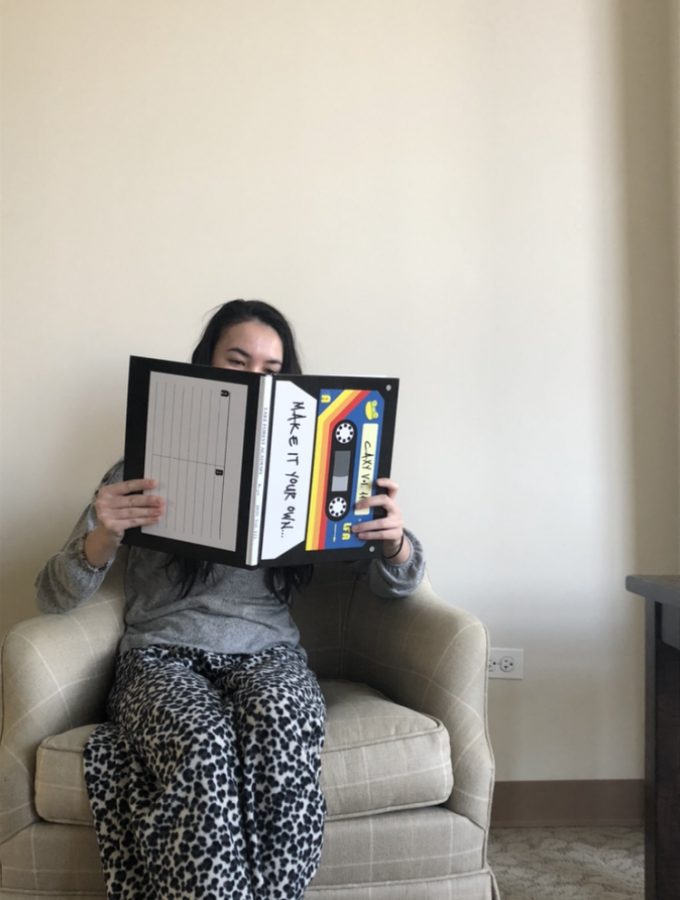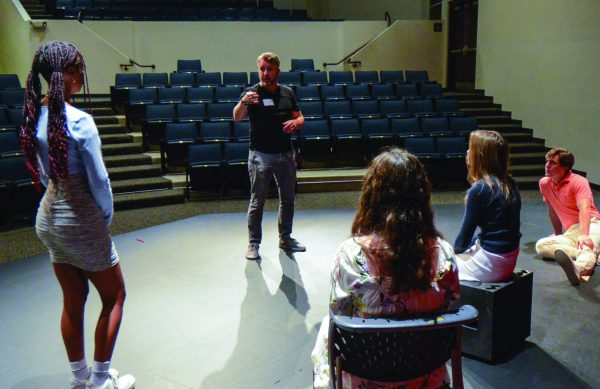Changes to the 2021 Yearbook
Photo by Rachel Johns
Gigi Taillon reads the 2019-2020 yearbook.
May 4, 2021
The excitement of getting the yearbook at the end of the school year is an unparalleled feeling, perhaps rivaled only by the thrill of reading the new Spectator each month of course. This year though, the beloved catalogue of Caxy recollections will be a bit different. In an interview with one of the yearbook advisors and Assistant Dean of Admission Emily Kalis, many fundamental changes to this year’s yearbook were outlined.
Kalis took on the mantle of Yearbook Advisor alongside her colleague and friend Dave Atas, Head Athletic Trainer. After suggesting each other for the job, they were asked to become co-advisors. The need for new yearbook advisors came about when the previous advisor, Jason Koenig, the Fine and Performing Arts Chair, had scheduling conflicts that precluded him from attending every yearbook meeting.
Atas and Kalis officially assumed their positions as advisors at the beginning of second semester, not knowing the challenges that would lie ahead. Perhaps the most pressing issue was that of budget cuts. According to Kalis, the yearbook budget was cut by over fifty percent due to the pandemic.
The lack of funds initially prompted the yearbook team to create two paperback editions of the yearbook, one for the fall semester and one for the spring semester. In January, the autumn paperback edition was just sent to the printing press, when students on the yearbook committee intervened and asked the advisors to consider a single hardback edition like done in previous years. Fortunately, the printing process had not yet begun, and the students were able to secure a hardback edition of the 2020-2021 yearbook, albeit a truncated version.
The 2020-2021 yearbook will feature 56 pages, a significant decrease compared to the typical 150 pages. The budget and subsequent page cuts will manifest in a condensed, jam-packed version of the yearbook. In fact, Kalis and Atas fought to add an additional 8 pages for senior ads, as the yearbook was initially budgeted to only be 48 pages. Only having 8 pages for senior ads resulted in ads only being one eighth of a page compared to the usual half page ads. Interestingly, families still need to pay the same price to place an ad that is four times smaller.
Regarding the truncation of the yearbook, Kalis said “As much as it seems like it is cutback a lot, we fought to have what it is going to be this upcoming year…I hope that students despite it being a visually very different book than in past years that they still feel that tradition and that sense of community come through in this edition…We empathize with you, we completely understand the frustration, but we worked with the cards that we were dealt.”















